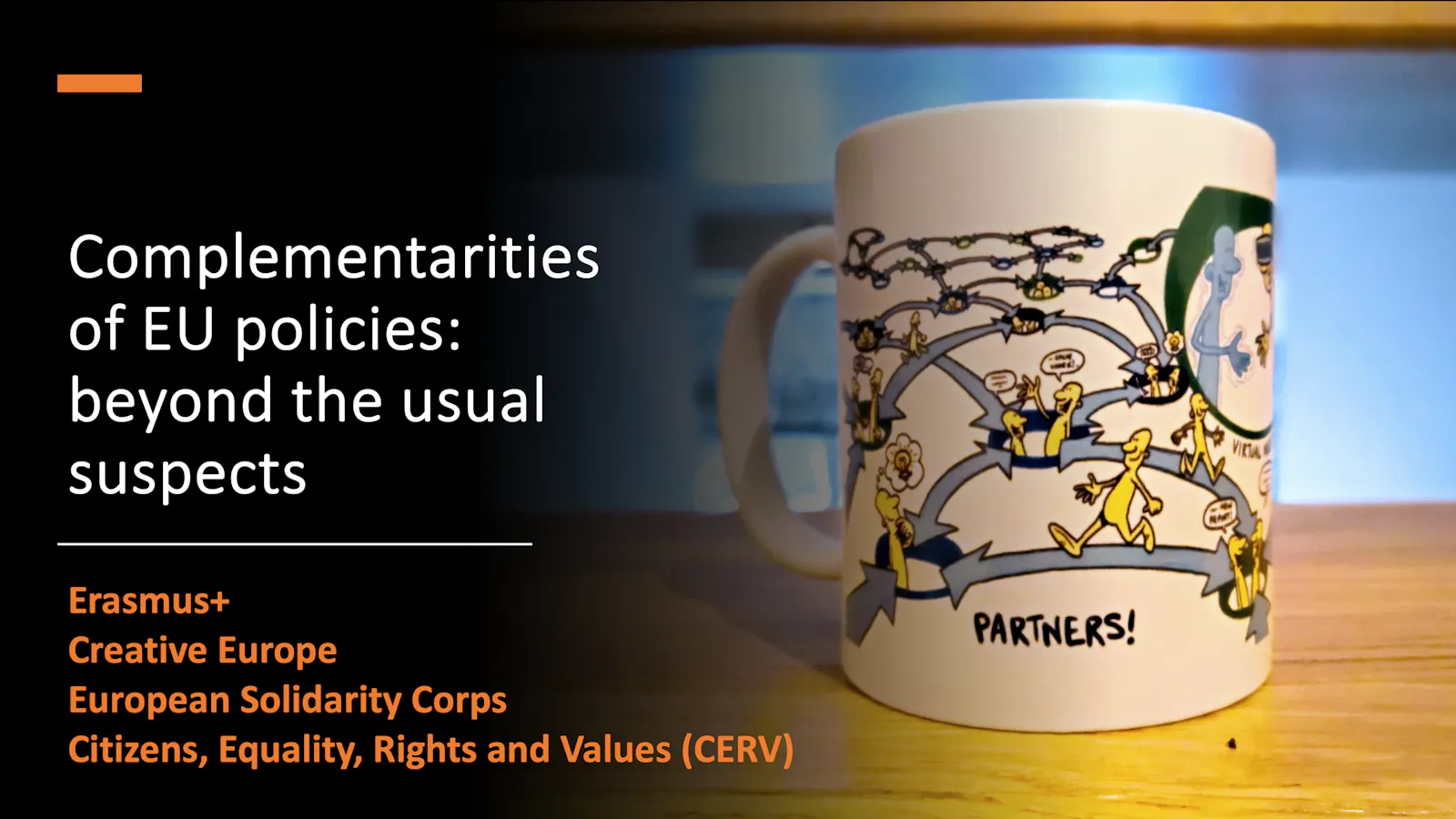Complementarities of EU policies – beyond the usual suspects
September 2023

In an earlier blog post (Opens in a new window) we stressed the need to pay more attention to potential synergies between policies – in particular EU policies. Many objectives cannot be achieved by a single policy but require various policies to play together – this is especially the case in an environment of ambitious policy objectives and increasing financial constraints.
This post touches on four policies not so prominent in the debate of territorial development, i.e. Erasmus+, Creative Europe, European Solidarity Corps, and Strand 3 of CERV. Based on a recent report to the European Parliament (Opens in a new window), it addresses their coherence with major EU challenges and priorities. Taking this debate one step further, we add some freestanding reflections on their potential links to the EU cohesion objective and Cohesion Policy.
The four programmes
The focus of the above study is on four programmes in the field of culture and education:
Erasmus+ offers opportunities for young people, i.e. students, pupils and apprentices, to study, train and work abroad, as well as opportunities for adult learners and teaching staff. It supports various initiatives such as European universities, centres of vocational excellence, DiscoverEU and the European student card.
Creative Europe aims to safeguard, develop and promote European cultural and linguistic diversity and heritage, and to increase the competitiveness and economic potential of the cultural and creative sectors, in particular the audiovisual sector.
European Solidarity Corps offer young people the possibility to become involved in a range of different solidarity activities. These include volunteering; local solidarity projects bringing together at least five people residing in the same country around a common project; and volunteering in humanitarian aid.
CERV stands for Citizens, Equality, Rights and Values. Strand 3 of the programme sets out to promote citizens' engagement and participation in the democratic life of the EU and exchanges between citizens of different member states.
Potential contributions to EU priorities
The EU Parliament study shows that while each programme has strengths and areas for improvement, their adaptability and potential to contribute to EU objectives are evident.
To read this post you'll need to become a member. Members help us fund our work to ensure we can stick around long-term.
See our plans (Opens in a new window)
Already a member? Log in (Opens in a new window)


